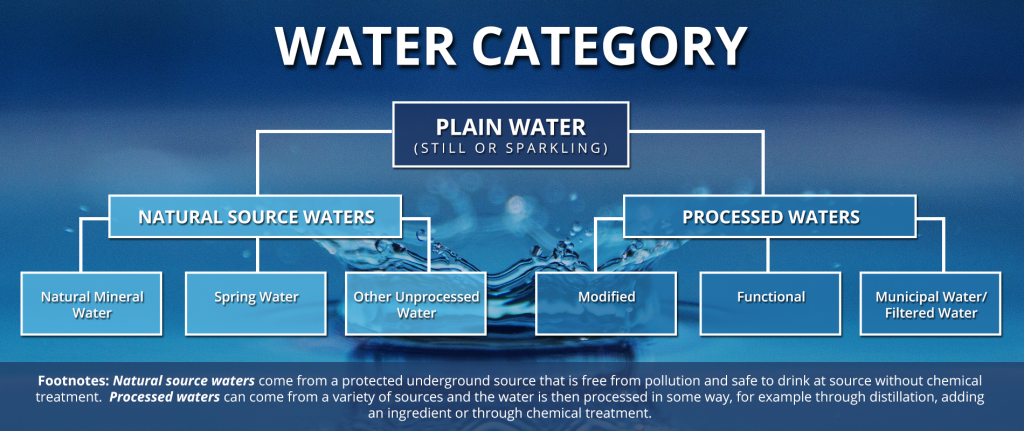Legal Classification
Legal Classification
There are three legal classifications for natural source waters: Natural Mineral Water, Spring Water and Bottled Drinking Water.
Natural Mineral Water: Originates from an underground water source, which emerges or is extracted from a spring tapped at one or more natural or bore exits. Its mineral content and its constituents must be stable over time and its original purity having been preserved intact because of the underground origin of the water, it must be microbiologically wholesome and have been protected from the risks of pollution. Natural mineral water must be recognised as such before trading.
Spring Water: Water can only be bottled and/or labelled and/or sold with the description “spring water” if it originates from an underground water source, which emerges or is extracted from a spring tapped at one or more natural or bore exits, it must be microbiologically wholesome and have been protected from the risks of pollution. Unlike natural mineral water however, water that is labelled as spring water does not have to be officially recognised nor have a stable composition over time.

Both types of water are subject to very limited permitted treatments, none of them involving the disinfection of the water at source, which must be clean and in their original state.
Both Natural Mineral Water and Spring Water must:
- Originate from a natural, protected and identified underground source;
- Be bottled at source; and
- Be safe to drink without treatment.
The main difference between Natural Mineral Water and Spring Water is the requirement of Natural Mineral Water to have a characteristic stable mineral composition.
Bottled Drinking Water: Drinking water which is bottled and is neither labelled nor sold as spring water or as natural mineral water. It can come from a variety of sources, although in the UK, we believe that they all originate from natural, underground sources. This is what we colloquially call table water.
There are some Bottled Drinking Waters that may have come from a natural source originally but have then been modified or something, such as electrolytes, have been added to the water.


